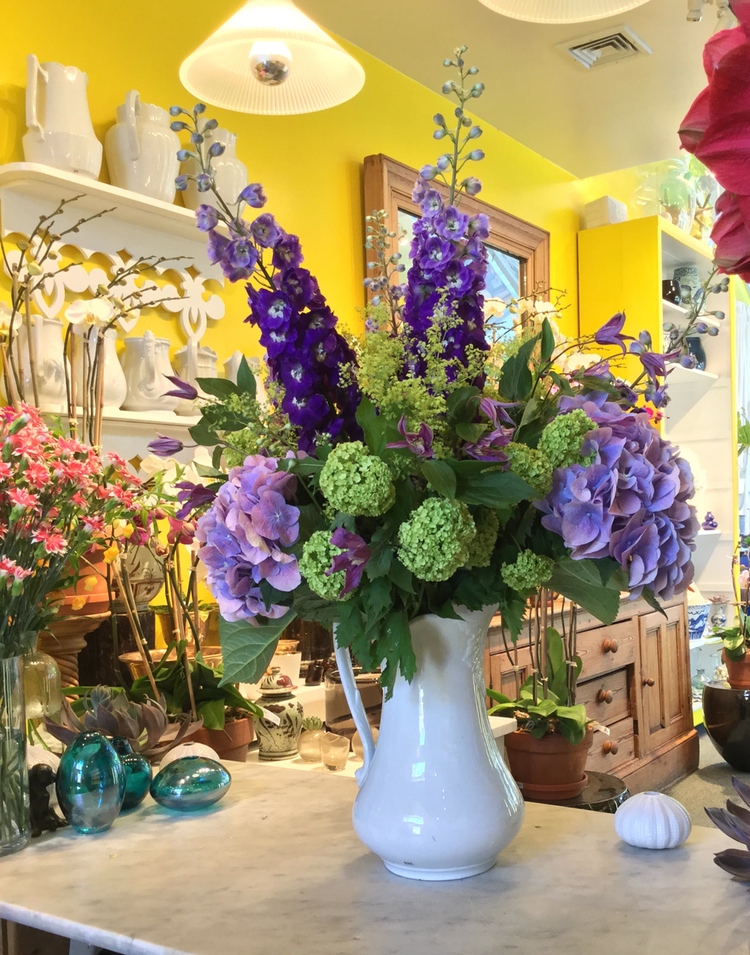 Talk about Tradition. One of our customers has come into the shop every year for years and bought his wife one of the pieces of Ironstone we stock filled with flowers. We carry several sizes, from smaller pitchers to the largest sizes. His wife's collection has expanded to the point where she really has an outstanding collection thanks to her husband's thoughtful gifts. If you'd like to start a tradition or just latch onto your own piece of porcelain history, do drop in and see all the great options we have at prices that are considerably lower than you'll see anywhere else. I have been collecting ironstone pitchers for 20 years. A Little History on Ironstone Ironstone china as we know it was first patented in 1813 by Charles James Mason in Staffordshire, England. It was an improved china harder than earthenware and stronger than porcelain. Mason's patent lasted only fourteen years, and by 1827 a number of other potters had already experimented with his formulas. All of these wares were decorated with transfer patterns or brush-stroke designs. Occasionally an undecorated piece would find its way out of the factory, possibly because it was flawed in some way. Ironstone Goes West In the 1840's, England began exporting the undecorated wares to the American and Canadian markets. The English potters discovered that the "Colonies" preferred the unfussy plain and durable china. Specifically, it was 1842 when James Edwards marketed the first white ironstone china in America. Late in the 1850's and into the 1860's huge quantities of china were sold to the agricultural communities and called "thrashers' ware." These dinner, tea and chamber sets were embossed with wheat, prairie flowers and corn in order to appeal to the farmers, who had to feed all the people that helped with the harvest. Ironstone Today Little of this plain embossed white ironstone could be found in England until just recently, when a staff member of the City Museum and Art Gallery of Stoke-on-Trent visited the U.S. He purchased several pieces which now reside in the Museum. This is obviously an oversimplification of the history of English white ironstone in America. There is also the advent of American ironstone manufacture but that's another story. WICA's newsletter, WHITE IRONSTONE NOTES, will cover this history and all the patterns and pieces as we go along. Won't you join us on this journey of discovery? Here are a few pictures of my collection.
Talk about Tradition. One of our customers has come into the shop every year for years and bought his wife one of the pieces of Ironstone we stock filled with flowers. We carry several sizes, from smaller pitchers to the largest sizes. His wife's collection has expanded to the point where she really has an outstanding collection thanks to her husband's thoughtful gifts. If you'd like to start a tradition or just latch onto your own piece of porcelain history, do drop in and see all the great options we have at prices that are considerably lower than you'll see anywhere else. I have been collecting ironstone pitchers for 20 years. A Little History on Ironstone Ironstone china as we know it was first patented in 1813 by Charles James Mason in Staffordshire, England. It was an improved china harder than earthenware and stronger than porcelain. Mason's patent lasted only fourteen years, and by 1827 a number of other potters had already experimented with his formulas. All of these wares were decorated with transfer patterns or brush-stroke designs. Occasionally an undecorated piece would find its way out of the factory, possibly because it was flawed in some way. Ironstone Goes West In the 1840's, England began exporting the undecorated wares to the American and Canadian markets. The English potters discovered that the "Colonies" preferred the unfussy plain and durable china. Specifically, it was 1842 when James Edwards marketed the first white ironstone china in America. Late in the 1850's and into the 1860's huge quantities of china were sold to the agricultural communities and called "thrashers' ware." These dinner, tea and chamber sets were embossed with wheat, prairie flowers and corn in order to appeal to the farmers, who had to feed all the people that helped with the harvest. Ironstone Today Little of this plain embossed white ironstone could be found in England until just recently, when a staff member of the City Museum and Art Gallery of Stoke-on-Trent visited the U.S. He purchased several pieces which now reside in the Museum. This is obviously an oversimplification of the history of English white ironstone in America. There is also the advent of American ironstone manufacture but that's another story. WICA's newsletter, WHITE IRONSTONE NOTES, will cover this history and all the patterns and pieces as we go along. Won't you join us on this journey of discovery? Here are a few pictures of my collection. 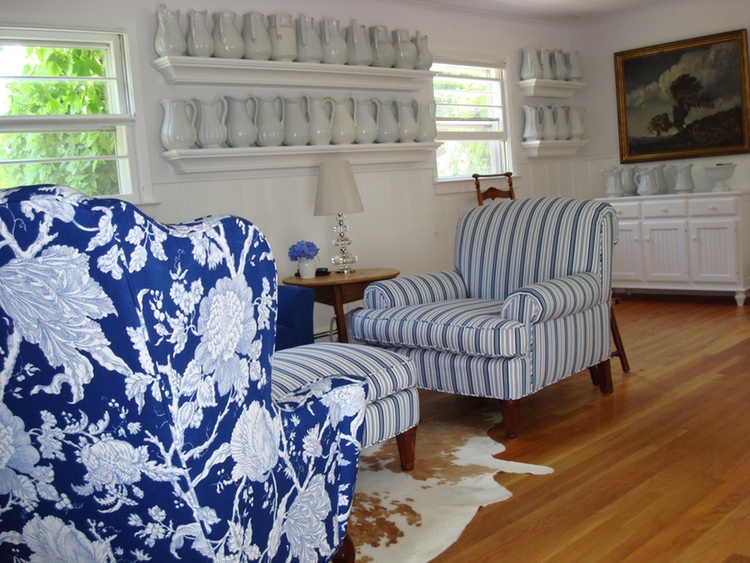
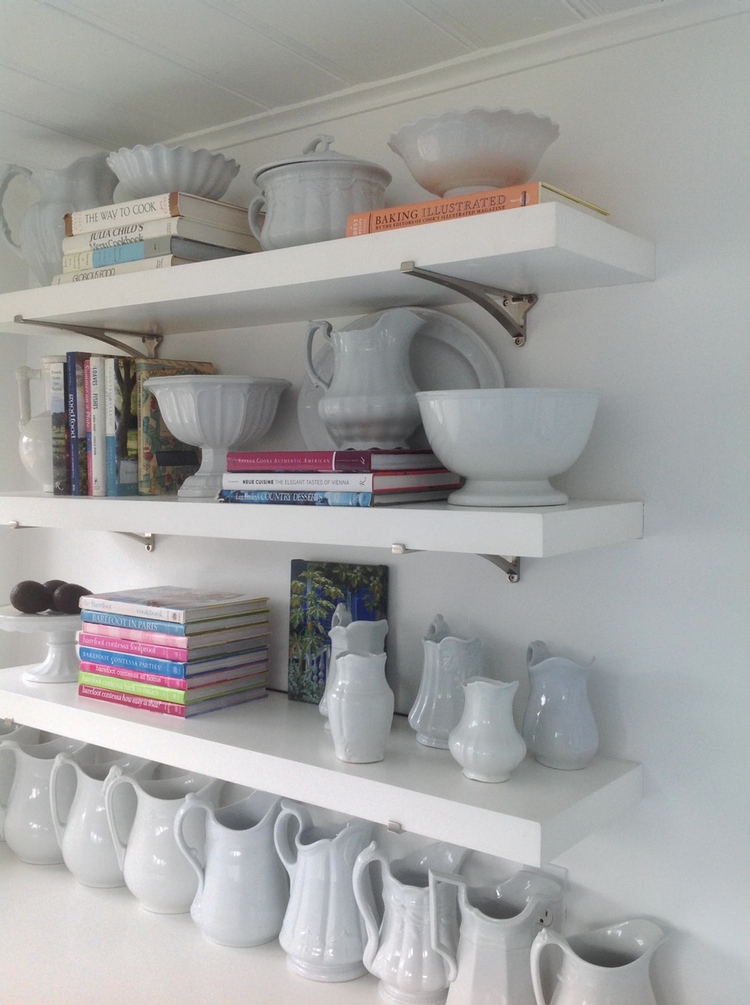
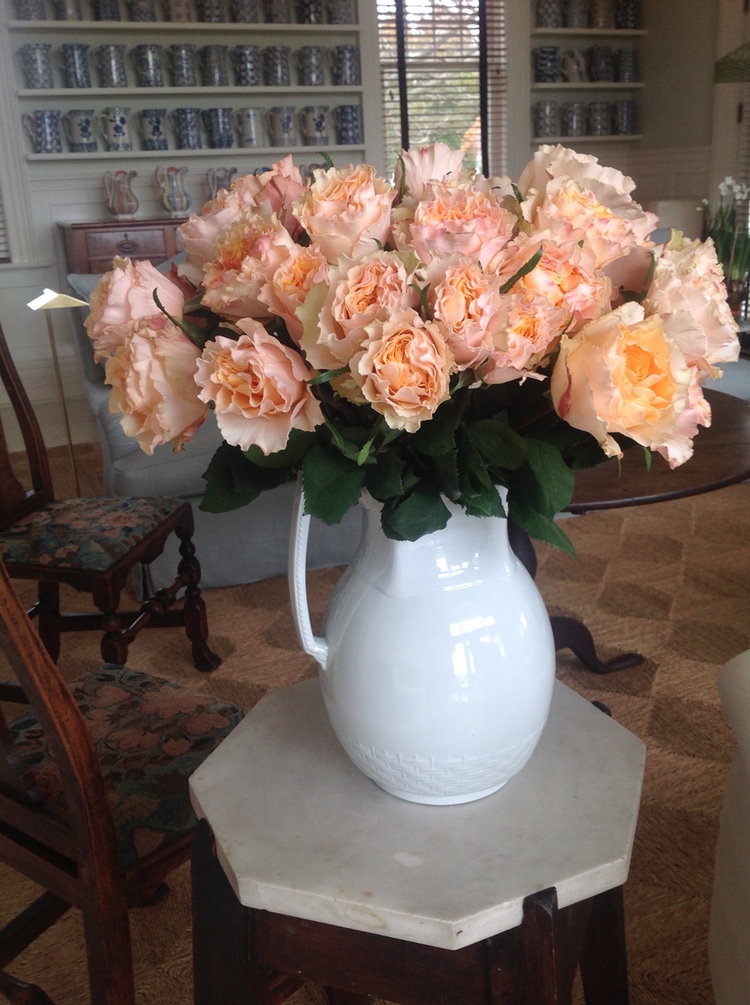 From garden roses to...
From garden roses to...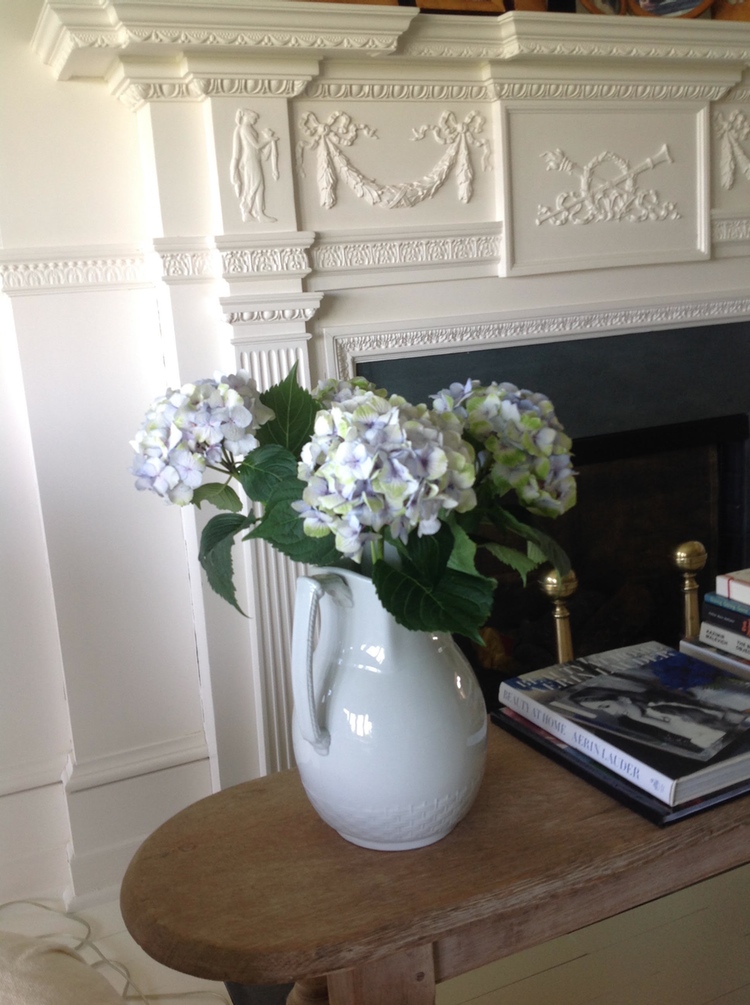 ...hydrangeas (its my favorite country look)
...hydrangeas (its my favorite country look)

Website Design by
Graphic Image Group Inc.


THE SHOP

In the heart of the Hamptons, The Bridgehampton Florist is the destination for the Hampton’s best flowers, including the largest selection of orchids anywhere on the East End. The shop is filled with a wide selection of wonderfully curated gifts for every important occasion. Drop in for attentive service, thoughtful gift ideas and even the greeting cards to go with them.

MICHAEL & JIM

Michael Grim and Jim Osburn have been an integral part of the Hamptons community for over 30 years. Their knowledge of flowers, their impeccable taste and their genuine delight in their work are unmatched and yours whenever the occasion calls for it.


SERVICES
The Bridgehampton Florist is far more than a conventional flower shop. We offer complete floral design services tailored to your home. We can make your next event the most memorable of occasions –whether it’s an intimate dinner for 6 or a once-in-a-lifetime party. Call for a consultation.

You're the first to know! Check in here to see what's in stock today!

Hydrangea - White
Huge white and white hydrangea, perfect stand alone or in large vases. Click SEE MORE button for arrangement ideas. Lasts 4-6 Days in fresh water.
‹ SEE MORE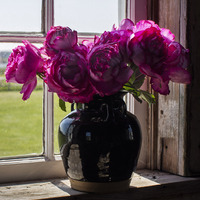
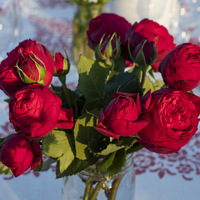

TESTIMONIALS
Their Lovely Creations Have Graced My Home Throughout The Seasons
If you are looking for flowers that your guests will be talking about long after their visit, there is no better choice in my book than The Bridgehampton Florist. The moment you meet Michael and Jim, you become family. They are generous and kind, experienced and creative and are masters of their craft. From a singular bloom to a riotous arrangement, from the simplest country bouquet to sophisticated gala chic, BH Florist has no equal. Their lovely creations have graced my home throughout the seasons and over several decades. – Julie Andrews
Flower Whisperers
What a luxury to have a florist you can trust implicitly with any possible occasion! Michael and Jim have an artistic flair and magical touch that is all class, elegance and taste — with a dash of creative whimsy. In addition to their remarkably fresh and beautiful blooms, they are extremely personable, caring and loads of FUN. We just love to hear the oohh’s and aahh’s of guests enjoying their most extraordinary creations that have graced our home for over a decade. — Rob Marshall & John DeLuca
Subtle and Elegant Floral Designs
Michael is my wife’s florist and he is incredibly talented. I think his designs are subtle and elegant and don’t overwhelm my home. He is a warm presence every time he works in our home and his flowers bring happiness to my wife and family. Originally, I wasn’t interested in seeing flowers around the house, but once I got used to it and began to appreciate it then, I noticed there were flowers everywhere, but in my office. I asked why I was left out, and I think that made Michael happy that I noticed and appreciated his work. The next week and ever since, I have had small flowers in my office. – David
My Glorious Bouquet
I have been using Jim and Michael for 15+ years for the same glorious bouquet pretty much year round. Jim and Michael and my glorious bouquet were so much a part of my life that I couldn’t live without them even during major construction, scaffolding, paint tarps and all…it made that process bearable and beautiful! – Jane Wenner
Creative Genius
Thanks to Jim and Michael’s creative genius, attention to detail and masterfully breathtaking floral arrangements I have attended some of the most beautiful weddings! (most of them mine!) Fortunately, they also make the most charming condolence bouquets…so colorful and fresh, they are guaranteed to put a smile on your face no matter what! Life is always full of surprises and reasons to celebrate, and EVERY occasion is made more beautiful and memorable with Jim and Michael’s magic touch! After all, there aren’t many guaranties in life, but Bridgehampton Florist is one of them! As they say, “Life isn’t measured by the number of beaths you take, but by the number of bouquets that take your breath away” – Christie Brinkley
Fresh and Beautiful Arrangements
The flowers are fresh and beautiful and their arrangements, unusual. My weekly visits with Jim and Michael make me feel like I’m taking a stroll through the markets back home in Amsterdam! – Annette Roque Lauer
Wonderful Flower Shop
Michael Grim and Jim Osburn started this wonderful flower shop years ago, and it’s as good as ever. You can buy armloads of local flowers in the summer and beautiful imported flowers all year long. They also make gorgeous arrangements to send to that special someone. – Barefoot Contessa
 << BACK TO MICHAEL’S BLOG
<< BACK TO MICHAEL’S BLOG
Ironstone China History & Tradition
Thursday, July 16, 2015

MICHAEL'S BLOG
NEW - 2017, November 20 - Happy Thanksgiving!2017, August 29 - The Bridgehampton Classic Horse Show just opened today…with a new entrant!2016, December 20 - Effortless Christmas Decoration Brings Sag Harbor Home for The Holidays2016, December 3 - How to Decorate for Christmas in Red, White and Blue!2016, November 22 - How to Decorate a Mantelpiece for Thanksgiving2016, November 17 - Great Thanksgiving Decorating Ideas from The Bridgehampton Florist2016, September 28 - I like Peanut Butter2016, August 15 - And now for something completely different…2016, August 3 - How To: Make a Grand Entrance2016, July 20 - How To: Make a Centerpiece filled with White Hydrangeas in a very shallow bowl.2016, July 12 - Thought you might like to see 'The Better Half'....of Ina Garten2016, March 25 - Easter Holiday at The American Hotel2015, December 11 - How to Create the Ultimate Holiday Wreath2015, September 5 - 40th Anniversary Spectacular Hampton Classic - 2015 Wrap Up2015, August 25 - 40th Year of the Hampton Classic2015, August 14 - Creating an Unforgettable Setting for a Special Event2015, July 31 - Hamptons' Summer Charities Benefits Causes Large and Small2015, July 31 - Using Surrounding Objects To Create a Beautiful Floral Design2015, July 16 - Ironstone China History & Tradition2015, July 11 - Designing a Table Setting & Beyond (Part II)2015, July 3 - Designing a Table Setting & Beyond (Part I)2015, April 8 - San Francisco, here we come!2015, February 11 - Garden of Virginia Symposium in Beautiful Colonial Williamsburg2014, December 5 - When the Snow Sets In2014, December 3 - Expert Ways for a Holiday Fête: Use Fruit2014, October 30 - Photo Shoot for Elle Decor Magazine at Aerin Lauder's Home2014, September 4 - The Bridgehampton Florist table at the Hampton Classic Grand Prix2014, August 19 - The Hampton Classic Grand Prix is Around The Corner2014, August 11 - The Bridgehampton Florist Beautifies The Hampton Classic2014, May 8 - We Shot a New Show with Barefoot Contessa!2014, May 6 - Jim and I Have Been Blessed With 2 great Mothers2014, January 7 - New Year's Toast: A Fashionable Lunch With Aerin Lauder2014, January 7 - Aerin Lauder's New Years Luncheon in Veranda Magazine2013, December 10 - Christie Brinkley A Good Friend of The Bridgehampton Florist2013, November 23 - Thanksgiving Table Decoration Simple & Fun!2013, November 18 - Jack-Be-Little Candles2013, October 25 - Our Appearance on Food Networks 2013, October 17 - Welcome to The Bridgehampton Florist's New Blog!2013, October 17 - Surprise Dinner Party with Ina and Friends!2013, June 26 - Michael Grim Flowers Houses in the Hamptons2012, September 23 - Gift CertificatesWe are Taking Orders for Curbside Pickup or Delivery.
Our Storefront and Shop is Closed to the Public.
Window Shopping is Always Welcome!
We have Phalaenopsis Orchids, from single stems to 7 stems and Beautiful fresh flowers, both local and, from around the world. Please call to place your orders, to find out what’s fresh today, or to talk about a weekly delivery.
Check out what’s happening in the shop on Instagram: @thebridgehamptonflorist
STAY SAFE
Jim and Michael,
And Jordan too!


